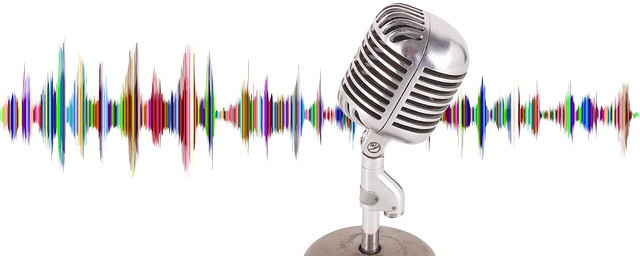For generations of vinyl devotees, the discussion has raged, what is better, mono or stereo? In this article, I am going to offer a discussion on the subject. In doing so, I hope to shed some light on the question, “what is the difference between mono and stereo?” Hopefully, you can then make your own mind up.
Etymology
To start the discussion, let’s see what the two words mean in the most literal sense. Mono could come from a word dating to 1931, monaural, which is a combination of the Greek mono meaning single, and the Latin aural, which means pertaining to the ear or hearing. Therefore, “relating to or having or hearing with only one ear.”
Alternatively, it could come from the word, monophonic, which was first coined in 1958. Mono, as above, plus phonic, another word of Greek origin, meaning “of, or pertaining to, sound.”

In the case of stereo, first we had stereo itself, which was word of Greek origin, meaning solid, firm or three dimensional. In 1927, this was combined with phonic, giving us stereophonic, which means “giving an impression of the spatial distribution (i.e., the three-dimensional nature) of sound.”
Phonic was later dropped from both words leaving us with mono and stereo. It’s interesting to note that although stereophonic is an older term than both monophonic and monaural, stereo recordings came later than mono ones. Here we see a new term for a new type of sound recording and then the backwards refitting into language of a term for the older type of sound recording.
Anyway, that’s enough etymology. Let’s get into the discussion.
Development of stereo technology
In the beginning, all sound recordings were mono ones. Edison, Bell and their contemporaries would all have recorded sound in mono. Consequently, the first commercially available records were mono only. Sound from more than one sound signal may well have would be recorded in the studio (i.e., multiple microphones), but they would all have been mixed down to a single signal.
In Britain
The progression toward stereo started with a night out at the cinema. In 1931, Alan Blumlein was a senior sound engineer with the newly formed EMI in London, and he had been out to the cinema with his wife. Frustrated that the words and sounds emanating from the speaker did not match with the action on the screen, he set about rectifying the problem.
Blumlein’s big idea was to ignore the idea that two speakers would essentially feed an ear each, but to consider instead the idea of a sound field with directional information as opposed to the rather simplistic left/right extension of the single sound reproduced in mono.
By the end of 1931 he had patented the ideas of stereo records and film soundtracks, and perhaps most groundbreakingly, surround sound. The physical manifestation was a system of two channels in a single groove. It was known as a 45/45 system, with the channels etched at 45° and -45° on a gramophone record which would be played back simultaneously: stereo, or binaural, playback.
In 1934 Blumlein had recorded the London Philharmonic Orchestra rehearsing Mozart’s Jupiter Symphony at the newly opened EMI Studios (later named Abbey Road Studios).
In the US
Around the same time, in the United States, Harvey Fletcher and Arthur Keller of Bell Laboratories, had also been working on stereo technology. Their first foray into the field had been with the development of stereo hearing aids and headsets. In 1932 under their guidance, Bell Labs made a stereo recording of the Philadelphia Orchestra, conducted by Leopold Stokowski.
So, we were all set for the move towards stereo recording and reproduction. But then, no. First EMI decided to shelve Blumlein’s research in 1934, citing “no immediate commercial potential” because other necessary technologies were not yet available. Then, Blumlein moved to work at the nascent BBC TV service before WW2 intervened and he moved to work on the radar project. Sadly, Blumlein was killed in an air crash in1942 whilst working on radar.
In the US, the development of stereo was not halted. Keller (via Western Electric spin off Westrex) was also issued with a patent for a different, but similar 45/45 system for recording stereo sound. Keller insisted that he was unaware of Blumlein’s work and only learnt of it in the 1950s.
Convergence of stereo standards
By the time the war was over, development resumed on both sides of the Atlantic. In Britain, Decca and EMI were at loggerheads and bizarrely, the Blumlein/EMI 45/45 system became the British and hence European standard, despite it being (British) Decca, rather than EMI, who insisted on it. Arthur Haddy, of Decca, takes great credit for this step. Over in the US, the Keller/Westrex 45/45 system was adopted as the US national standard.
At this point, moves by the British prompted the Audio Engineering Society to now recognise the priority of Blumlein’s work over Keller’s. As a result, the US patent was voided and Blumlein’s became the worldwide standard.
However, Blumlein’s suggested name of binaural sound was not adopted. Instead, the terms stereophonic and stereo were. Instead of applying to a three dimensional or spatially distributed sound, stereo became associated with a left/right channel sound only. This was perhaps unfortunate as the original meaning of stereo was lost.
Cost and the gradual phasing out of mono
Because of the initial cost of stereo products, both software and hardware, stereo pressings were limited to the classical repertoire. Plain and simple, parents were considered to have more cash. Popular music, intended for replay via cheap low-fidelity players, remained available in mono throughout most of the 1960s.
The trend towards stereo only for popular music had only begun at the end of the 1950s. The Billboard Hot 100 began showing whether singles were available on stereo as well as mono from May 1959.
In terms of popular music LPs, the first Elvis Presley album to be released in stereo was 1960’s Elvis Is Back!. His first album mixed only in stereo was 1969’s From Elvis in Memphis.
In 1962, Bob Dylan’s eponymous debut LP was released in stereo as well as mono. Beginning with 1969’s Nashville Skyline, his LPs were released in stereo only.
Similarly, the Beatles’ 1968 album, The Beatles, a.k.a. The White Album was the last of their albums to be mixed in both mono and stereo in the UK. In the US it was their first album released only on stereo. After this, they bowed to the march of progress.
Difference between mono and stereo
It’s clear that the Beatles had a somewhat lukewarm relationship with stereo recording. In the production of 1967’s Sgt. Pepper’s Lonely Hearts Club Band, three weeks were spent working on the mono mixes but only three days on the stereo mixes. In fact, the band had pretty much left much of the stereo work to producers George Martin and Geoff Emerick.
Many of the Beatles’ stereo mixes veer towards the two-channel model, rather than the three-dimensional model. So much so that many actively prefer the mono versions, citing the fact that the mono recording of all instruments was forced into a ‘stereo’ fit for the stereo mix. You best get the idea of what happens when you listen with headphones.
Lift off one can and maybe you’ll lose most of Paul or John warbling away, but you will still hear Ringo’s drum work. Swap them over and the drums are in the background somewhere, but the vocals are crystal clear again.
Let’s give the last word on the subject to George Harrison. He recalled that “[stereo mixes] ruined the sound from our point of view. We had everything coming out of one speaker, now it had to come out of two speakers – it all sounded very naked.”
Ultimately, pop music is like any other piece of art in that we always want to know what its creator intended. In the late sixties period, it’s important to investigate each album that interests you. How did the artist originally record? If mono and stereo mixes exist, you can decide what you prefer.
Post 1970 (which doesn’t include the Beatles), it’s probably best to go with stereo, unless it’s clear that the intention was to produce something purposefully vintage.
And back to Alan Blumlein
As we have heard, the Beatles were groundbreaking in almost every facet of their music, except stereo. They did not like stereo. Was stereo recording treated as a gimmick in the early days? Or was the technology just not properly understood. Did Blumlein’s work go to waste?

Well, no. It didn’t go to waste. Once mono had for the most part been discontinued, tracks were recorded and mixed directly into stereo. Technology has improved, so what we hear from stereo nowadays is a much more immersive sound. You get the full three-dimensional effect and it’s not just a two channel, drums over here, vocals over there effect.
If you have enjoyed this article or have anything you would like to add to the debate, please leave me a comment below.

Wow I’m learning things everyday! I didn’t know that stereo meant that you have three-dimensional sound. and I didn’t know that stereo was a great innovation in studios thanks to the Beatles! It’s true that the Beatles have revolutionized music, but people don’t understand how much they even innovate in the way their albums sound. I will share this with everyone I know!
Thanks for your comment. I am a bit of a nerd, so I love etymology. As I mention, the original meaning of the Greek stereo is 3 dimensional. As with many words from antiquity meanings get skewed along the way. Blumlein was on the right track with his surround sound idea.
Simon 😉